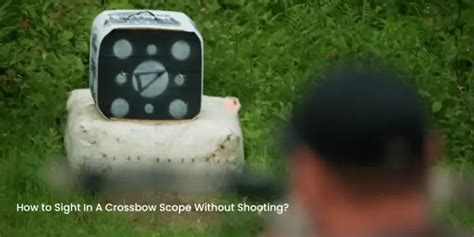Eliminate Crossbow Shot Inconsistency: Scope Tips
Crossbow hunting demands precision. A missed shot can mean the difference between success and failure, and inconsistent shots are a hunter's worst nightmare. While many factors contribute to shot inconsistency, your scope plays a crucial role. This guide explores key tips for optimizing your crossbow scope to eliminate inconsistencies and dramatically improve your accuracy.
Understanding Crossbow Scope Differences
Before diving into tips, it's vital to understand that crossbow scopes differ significantly from firearm scopes. Crossbows fire much slower, resulting in a longer flight time for the bolt. This means your scope needs to account for both the drop in trajectory due to gravity and the wind's impact. Most crossbow scopes are designed with multiple aiming points, each corresponding to a specific yardage. Understanding how these aiming points function is fundamental to consistent shooting.
Choosing the Right Crossbow Scope
Selecting the right scope for your crossbow is the first step towards eliminating inconsistency. Consider these factors:
- Magnification: Higher magnification offers clearer target acquisition at longer ranges, but can be less versatile at closer distances. Lower magnification scopes are generally more forgiving for beginners.
- Reticle Design: Look for a reticle that is easy to read and understand, particularly under low-light conditions. Common designs include multi-pin, illuminated, and single-pin scopes (with adjustable rings). Multi-pin scopes offer pre-set aiming points for various distances.
- Durability: Crossbow scopes experience significant recoil compared to firearm scopes. Ensure your scope is robust enough to withstand the repeated impact. Look for scopes constructed from high-quality materials like aluminum.
Common Causes of Crossbow Shot Inconsistency & How to Fix Them
Several factors can lead to inconsistent shots, even with a high-quality scope. Addressing these issues is key to improving accuracy.
1. Incorrect Scope Mounting
Improper scope mounting is a major source of inaccuracy. Ensure your scope is securely mounted to the crossbow rail, aligned correctly, and that the scope rings are appropriately tightened. A slightly misaligned scope can significantly affect point of impact.
2. Improper Zeroing
Zeroing your crossbow scope is critical. This process involves adjusting the scope's turrets to ensure your bolts impact the target at the intended point. Start by zeroing at your most frequently used range and then adjust for other distances. Incorrect zeroing will directly translate to inconsistent shot placement.
3. Improper Aiming Techniques
Your aiming technique significantly impacts accuracy. Consistent stance, proper grip, and smooth trigger pull are vital for repeatable shots. Practice your aiming techniques regularly to eliminate flinching or other inconsistencies.
4. Environmental Factors
Wind and temperature affect bolt trajectory. Strong winds can deflect your bolts, and temperature changes influence the bolt’s speed and trajectory. Understanding how these factors impact your shots is crucial for successful hunting.
2. What is the best magnification for a crossbow scope?
The "best" magnification depends entirely on your hunting style and typical shooting distances. For close-range hunting (under 30 yards), a lower magnification (1.5x-3x) is often sufficient and provides a wider field of view. For longer-range shots, a higher magnification (4x-6x) will allow for better target acquisition but reduces the field of view and can make it harder to track moving targets.
3. How do I zero my crossbow scope?
Zeroing involves adjusting the scope’s turrets to align the point of impact with your aiming point. This usually requires shooting at known distances, observing where your bolts land, and then making adjustments to the turrets. Consult your crossbow's and scope’s instruction manuals for detailed instructions; many are available online via manufacturers' websites. Remember to always shoot in a safe environment and follow all safety precautions.
4. How often should I check the zero of my crossbow scope?
You should check the zero of your crossbow scope regularly, especially after each hunting season or if you've made any adjustments to your crossbow or scope. Changes in temperature or significant recoil can affect zero point accuracy over time.
5. What are the common reticle designs for crossbow scopes?
Common reticle designs include multi-pin, illuminated, and single-pin reticles. Multi-pin reticles offer various aiming points for different distances. Illuminated reticles use light to improve visibility in low-light conditions. Single-pin reticles are typically adjustable for different ranges using a sliding adjustment mechanism. The best choice depends on your personal preference and hunting style.
Conclusion
Eliminating crossbow shot inconsistency requires attention to detail and careful consideration of several factors. By understanding your scope, properly mounting and zeroing it, and employing sound shooting techniques, you can significantly improve your accuracy and increase your chances of success. Remember to practice frequently and understand the effects of environmental factors on your shots. Consistent practice combined with these scope optimization tips will make you a more proficient and successful crossbow hunter.

